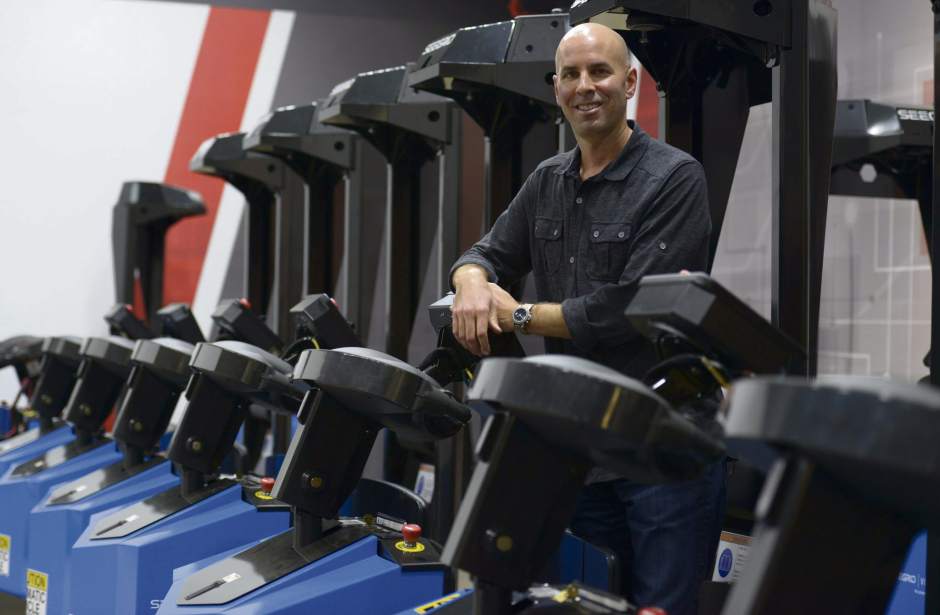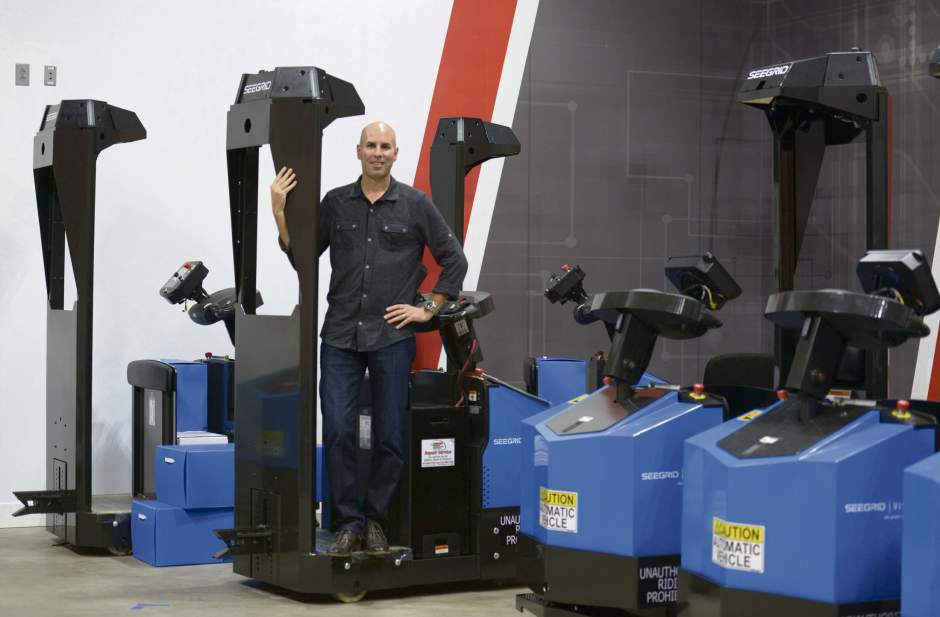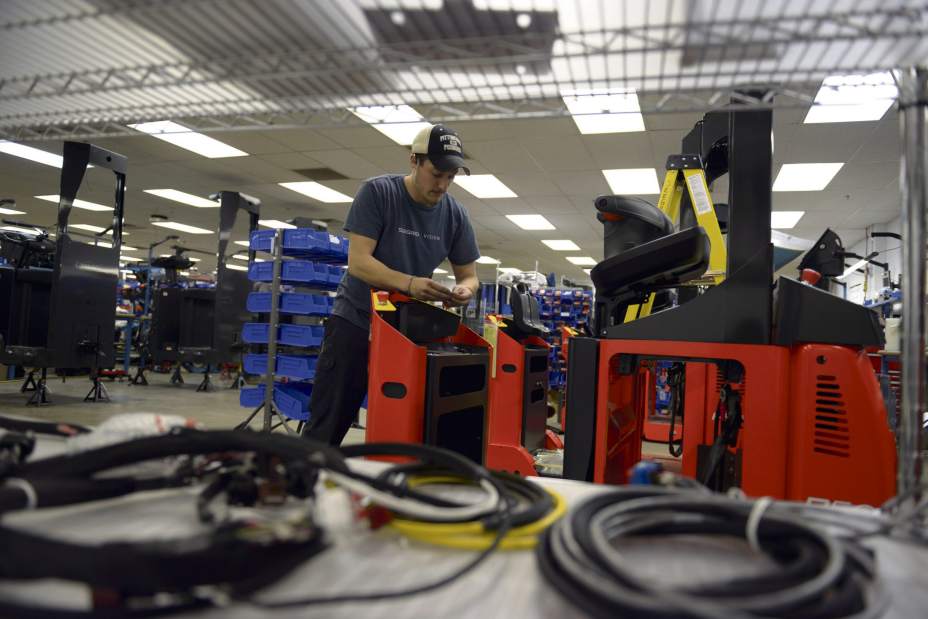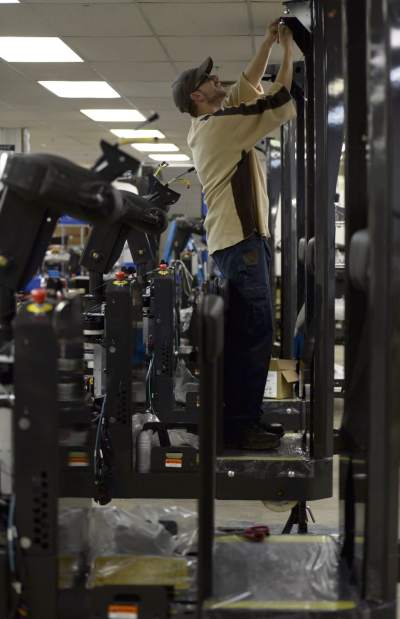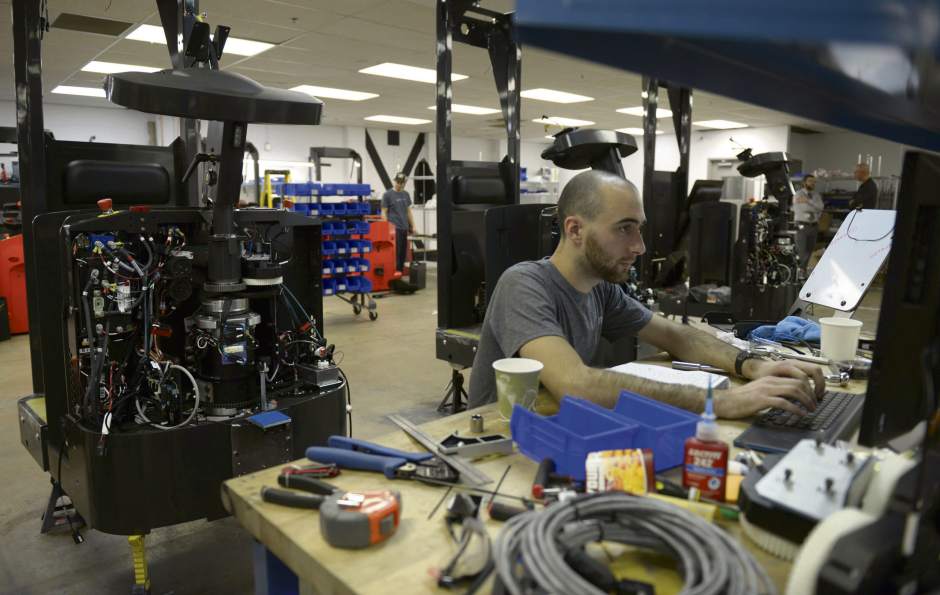Findlay warehouse automator Seegrid goes from financial dire straits to banner year
The dress code is casual at Seegrid Corp. in Findlay.
Pets are encouraged, and a pair of dogs in Steelers sweaters roam the offices of engineers and software developers, who are now regularly clad in jeans.
There's even a ping-pong table — more typical of Silicon Valley startups — though it was folded up during a recent tour because the company needed room for a large order about to ship.
And in the back, rock music plays from a stereo in the production area, where a half-dozen Seegrid workers upgrade equipment that resembles forklifts with autonomous technology, allowing companies to move products around warehouses and manufacturing plants without the need for a human operator.
Despite the casual dress, dogs, games and music, Seegrid is no startup. It could be called a reboot.
The laid-back atmosphere is indicative of a new culture installed at Seegrid over the last year by CEO Jim Rock. The 47-year-old self-described “tech industry nerd” wants his employees to have fun and enjoy coming to work. But there's a deeper objective to the transformation at the 13-year-old company.
“We're a technology platform company, not a forklift manufacturer,” he said.
Seegrid, which outfits industrial trucks with cameras, computers and laser sensors so the vehicles can navigate their surroundings and follow routes around a retailer's distribution center or automaker's assembly floor, is a tech company at heart, Rock said.
The company's greatest value lies in the software its engineers produce, which allows the cameras strapped to a forklift to “see,” he said, not in building machines.
Before Rock, who joined Seegrid in September 2014, the company was buttoned-up and inundated with rules, such as one that required employees to stay on-site for lunch.
Seegrid was unfocused, Rock said. The company chased business and applied its technology in a smattering of industries, which wasted money and eventually drove the company deeply into debt.
In the past 15 months, Rock has guided the company through a reorganization under Chapter 11 bankruptcy protection, overhauled and focused its strategy and charted a course for growth. The privately held firm has added 10 customers since emerging from bankruptcy in February and doubled its sales and workforce this year.
“This has been the best year in the company's history,” Rock said. “So we're optimistic.”
Rock, who started his career as an engineer at U.S. Steel Corp.'s Edgar Thomson Works in Braddock before moving to California to join the tech industry in the early 1990s, declined to provide specific numbers for sales and employees, citing competitive concerns.
Seegrid is focused solely on the powered industrial truck industry, which Rock said sells about 1 million vehicles a year around the world. And within that market, Rock is specifically targeting retailers and manufacturers with large warehouses and assembly plants, which typically use many powered trucks to move items around — trucks that are operated by drivers but could be automated.
“Companies are looking for ways to increase productivity,” he said. “And the reality is if you don't automate, you're not competitive anymore.”
Operators are prone to distraction and error, he said, causing about 7,000 accidents and 100 fatalities in the workplace each year. Seegrid's trucks have laser sensors that shut down the vehicles if a person gets too close, virtually eliminating accidents.
The trucks, which the company buys and outfits with its technology, are quickly and easily programmed to follow a specific route, can be manually driven if needed and don't require tracks for the vehicles to follow or sensors to be mounted inside a customer's facility for guidance. The computer technology that allows cameras to see was developed by Seegrid founder Hans Moravec, a robotics researcher at Carnegie Mellon University.
Rock declined to name Seegrid's newest customers but said the company has sold its autonomous trucks to hunting and fishing retailer Cabela's, Daimler Trucks' North American operations and O'Hara-based grocery chain Giant Eagle Inc., which is Seegrid's majority shareholder.
Giant Eagle financed Seegrid's exit from bankruptcy protection earlier this year, providing an undisclosed investment and agreeing to swap debt for equity.
“In addition to our common shareholder status, Seegrid also counts Giant Eagle among its clients, outfitting our retail support centers with its state-of-the-art vehicles,” Giant Eagle said in a written statement. “The results for Giant Eagle include streamlined operations, increased product movement flexibility and the ability to allow retail support center team members to perform more value-added work.”
Because Rock views Seegrid as a technology company, it's likely that growth won't lead to creation of many manufacturing jobs. Rock expects that the company will provide its camera-computer-sensor systems to the truck producers, who will build them into the vehicles from the start.
But Seegrid is hiring software and robotic engineers and sales and marketing staff, Rock said.
“Going into 2016, we're hiring like mad,” he said. “Compared to a year ago, we know where we belong now.”
Alex Nixon is a Trib Total Media staff writer. Reach him at 412-320-7928.

